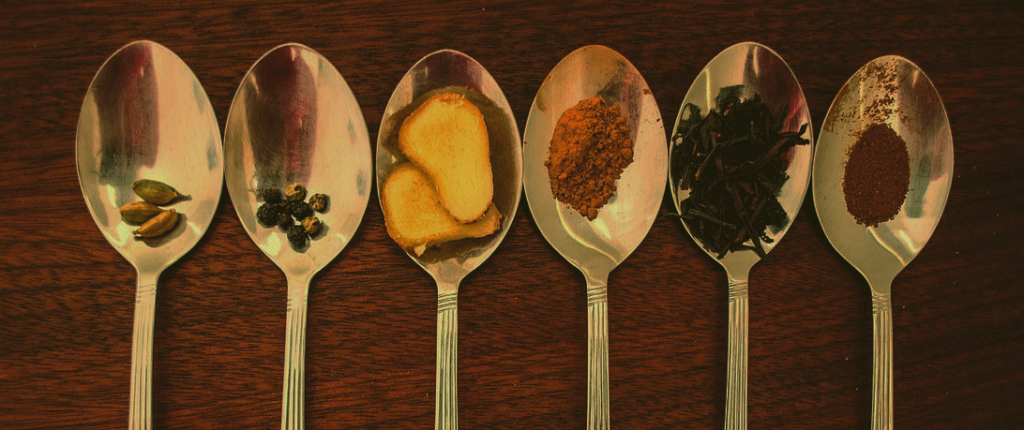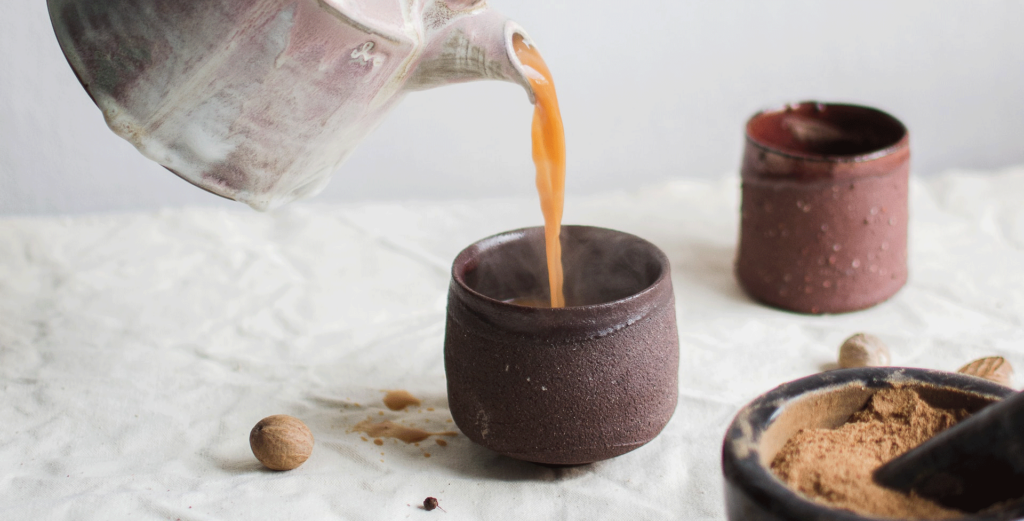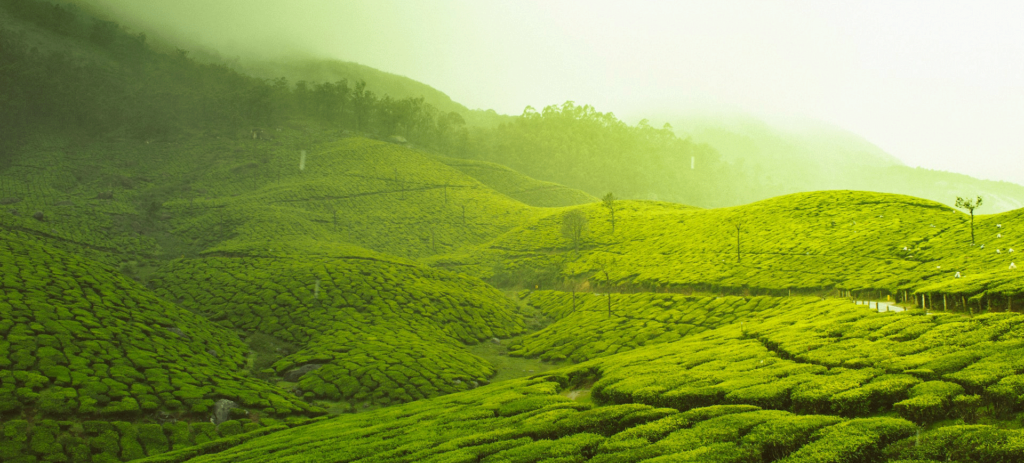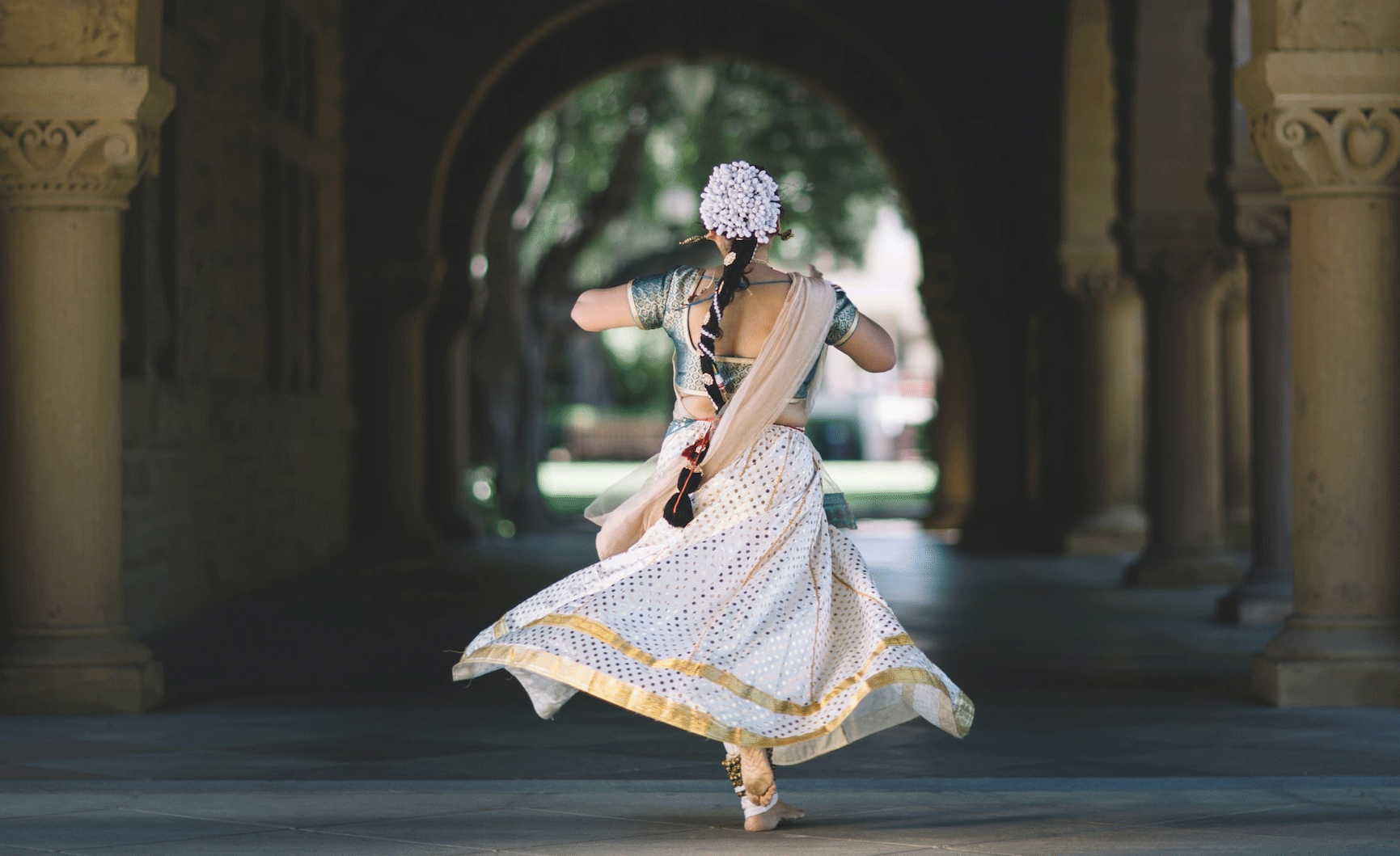Table of Contents
Introduction
Enchanting World of Indian Tea Culture
Welcome to a journey through the vibrant and diverse tapestry of Indian tea culture. India’s relationship with tea is not just about sipping a beverage; it’s a captivating story that intertwines history, culture, and flavor. As we embark on this adventure, you’ll discover the rich heritage and the multitude of flavors that Indian tea culture has to offer.
“Indian Tea Culture”
Indian tea culture, often referred to as “Chai” in local parlance, has not only made its mark within the country but has also influenced tea traditions worldwide. In this article, we’ll delve deep into Indian Tea Culture to uncover its historical origins, diverse varieties, preparation methods, and the significant role it plays in the lives of millions.
A Preview of What the Article Will Cover
Our exploration into Indian tea culture is a multi-faceted journey. Here’s a sneak peek at what we’ll be uncovering:
- The Historical Origins of Tea in India: We’ll trace tea’s roots in India, from legends of Bodhidharma to the British colonial era, and explore the deep connection between tea and Ayurveda.
- Diverse Indian Tea Varieties: The spotlight is on the famed Assam and Darjeeling teas, as well as the aromatic world of masala chai.
- The Art of Indian Chai Preparation: Learn the art of crafting a perfect cup of masala chai and dive into the cultural significance of this beverage in India.
- Tea Gardens and Estates in India: We’ll take you on a virtual tour of India’s lush tea plantations, including the picturesque landscapes of Assam and Darjeeling.
- Indian Tea Traditions and Rituals: Discover how Indian tea culture is intertwined with Ayurveda, Indian philosophy, and the colorful traditions and rituals that surround this cherished beverage.
- The Global Impact of Indian Tea: India’s contribution to the global tea scene is immense. We’ll explore how Indian tea culture has left a mark far beyond its borders.
This journey promises to be as flavorful as the tea we’ll explore, so let’s begin our expedition into the heart of Indian tea culture.
Historical Origins of Tea in India
Legend of Bodhidharma and the Introduction of Tea to India
Our journey into Indian tea culture begins with a legendary tale. It is said that in the 6th century CE, Bodhidharma, an Indian sage who later founded Zen Buddhism, brought the art of tea to India. In this section, we’ll explore this fascinating legend and the profound influence of Bodhidharma’s teachings on the Indian tea tradition.
Early Tea Traditions and Their Connection to Ayurveda
India’s relationship with tea extends deep into its ancient history. We’ll delve into how early Indian cultures incorporated tea into their daily lives, using it not only as a refreshing beverage but also for its medicinal properties. The connection between tea and Ayurveda, the ancient system of natural healing, will be unveiled, highlighting the holistic approach of Indian tea culture.
Role of the British East India Company in Indian Tea History
During the colonial era, the British East India Company played a significant role in shaping the trajectory of Indian tea culture. Their impact was transformative, both in establishing tea plantations across India and introducing Indian tea to the global market. Let’s delve into this fascinating chapter of history:
1. The East India Company’s Tea Initiatives: The East India Company was instrumental in recognizing the potential of Indian tea. They initiated tea cultivation in Assam and Darjeeling, two regions that would later become synonymous with high-quality tea production.
2. Assam and Its Rich Tea Potential: The discovery of indigenous tea plants in Assam, particularly Camellia sinensis var. assamica, marked a turning point. Assam tea became the company’s focus due to its robust flavor and ability to thrive in the region’s climate.
3. Darjeeling’s Ascent: Darjeeling, nestled in the Himalayan foothills, gained recognition for producing tea with unique and delicate flavors. The British took an interest in this region, leading to the establishment of Darjeeling as a tea cultivation hub.
4. The Influence of the Tea Act: The Tea Act of 1953, introduced by the British government, aimed to regulate the tea industry in India. This legislation helped in the systematic expansion of tea plantations and increased the export of Indian tea to Britain.
5. The Global Impact: Indian tea quickly gained popularity in the international market, notably in Britain, where it became a staple of British afternoon tea culture.
6. Plantation Labor: The British East India Company’s involvement also had profound effects on the labor practices in tea plantations. The demand for tea led to the recruitment of laborers, and the conditions of workers became a prominent issue during this period.
7. British Influence on Indian Tea Culture: British-style tea consumption and traditions significantly influenced Indian tea culture, including the adoption of milk and sugar in tea, the establishment of tea houses, and the consumption of “bed tea” as part of daily routines. For more information about british tea culture please visit here.
The legacy of the British East India Company in Indian tea culture is complex, marked by a mix of influence, impact on cultivation, and cultural assimilation. Understanding this history provides insight into the foundations of modern Indian tea culture and its global significance.
Diverse Indian Tea Varieties

Prominence of Assam Tea and Its Unique Characteristics
Our exploration of Indian tea culture wouldn’t be complete without diving into Assam tea. Assam, a region in the northeastern part of India, is renowned for its bold, brisk, and brisk teas. In this section, we’ll savor the unique characteristics of Assam tea, from its robust flavors to its distinctive malty notes. You’ll discover why Assam tea holds a special place in the hearts of tea enthusiasts around the world.
Allure of Darjeeling Tea and Its “Champagne of Teas” Reputation
Moving to the picturesque slopes of the Himalayas, we encounter Darjeeling tea, often referred to as the “Champagne of Teas.” Delicate, fragrant, and nuanced, Darjeeling tea stands in stark contrast to the boldness of Assam tea. We’ll take a closer look at what makes Darjeeling tea unique, including its flushes, terroir, and the experience of enjoying a cup of this extraordinary tea.
Aromatic and Spicy World of Indian Masala Chai
No exploration of Indian tea culture is complete without an aromatic journey into the world of masala chai. This beloved spiced tea has captured the hearts of tea drinkers worldwide. We’ll uncover the spices and preparation methods that make masala chai a true sensory delight. From its humble origins to its place in contemporary tea culture, you’ll gain a deeper understanding of the cultural significance of this flavorful blend.
Art of Indian Chai Preparation

Process of Brewing a Perfect Cup of Masala Chai
Brewing masala chai is an art that infuses Indian homes and streets with delightful aromas and flavors. Let’s delve into the steps of crafting the perfect cup of masala chai, appreciating the intricate process.
1. Choosing Quality Ingredients: The foundation of exceptional masala chai is the selection of high-quality tea leaves, aromatic spices, and fresh milk. These ingredients form the core of this flavorful concoction.
2. Balancing Spices: Masala chai is characterized by its distinctive blend of spices, which can include cinnamon, cardamom, ginger, cloves, and black pepper. The art lies in finding the right balance, creating a harmonious infusion of flavors that isn’t too overpowering.
3. Simmering and Infusing: Achieving the perfect cup of masala chai requires patience. The mixture of tea, spices, and milk is gently simmered to allow the flavors to meld together, creating a rich and fragrant brew.
4. Personalizing Your Chai: The beauty of masala chai is its adaptability. You’ll discover how different regions and individuals have their variations of this classic brew. Whether you prefer it stronger, sweeter, or with a particular spice dominating the flavor profile, masala chai offers a world of possibilities.
5. Savoring the Aromas: As your masala chai simmers, the kitchen fills with a captivating aroma. This step is where the anticipation builds, and you’re moments away from enjoying a comforting cup of this beloved Indian beverage.
6. Creating Your Chai Tradition: The process of brewing masala chai is not only about making tea; it’s about creating traditions. Families often have their unique recipes and rituals, which are passed down through generations. Brewing a perfect cup of masala chai is an act of love, inviting friends and family to come together and share in the warmth of tradition.
Cultural Significance of Chai in India
In India, chai is far more than a beverage; it is a cultural cornerstone. Its cultural significance weaves a tapestry of traditions, hospitality, and social connections that are deeply ingrained in Indian society.
1. Symbol of Hospitality: Offering chai to guests is a universal sign of warmth and hospitality in India. When you visit an Indian home or even a shop, you’re likely to be welcomed with a steaming cup of chai. This gesture transcends mere refreshment; it signifies a heartfelt welcome.
2. A Catalyst for Conversation: Chai acts as a conversation starter. It breaks the ice, opens the door for discussions, and brings people together. In India, many profound conversations happen over a cup of chai, whether it’s catching up with friends, discussing business matters, or sharing stories with family.
3. Part of Daily Life: For millions of Indians, the day doesn’t truly begin until they’ve had their first cup of chai. It’s an essential morning ritual, invigorating and preparing people for the day ahead.
4. Chai Wallahs and Street Culture: The omnipresent chai wallahs, or street vendors, are an integral part of Indian street culture. These vendors serve chai on busy streets, railway platforms, and markets. They’re not just purveyors of tea but also custodians of community spaces where people gather, converse, and connect.
5. Fostering Connections: Chai brings people closer, whether it’s among colleagues at work, during a train journey, or within families. The act of sharing chai often leads to sharing experiences, stories, and laughter, creating a sense of unity.
6. Rituals of Special Occasions: In Indian culture, special occasions like weddings, festivals, and ceremonies are incomplete without the presence of chai. It’s not just a beverage but an integral part of the celebration, marking these moments with warmth and togetherness.
7. Chai and Unity: Chai is a great unifier in the diverse and culturally rich country of India. People from various backgrounds, languages, and traditions share a common love for this beverage, which brings a sense of unity and belonging.
8. Strengthening Bonds: Whether it’s catching up with old friends, making new ones, or reconnecting with family, sharing a cup of chai is a ritual that strengthens bonds and forges connections in the diverse tapestry of Indian society.
Variations and Regional Differences in Chai Recipes
India’s culinary landscape is as diverse as its culture, and this diversity is prominently displayed in its chai recipes. These regional variations in chai reflect the distinctive flavors and characteristics that each part of India brings to this beloved beverage.
1. Kadak Chai (North India): In North India, chai is known for its strength and robustness. It’s brewed with bold Assam tea leaves and simmered with milk, water, and a generous amount of sugar and spices. The result is a thick, energizing chai that’s often consumed with snacks like samosas or pakoras.
2. Suleimani Chai (South India): Down in the southern regions, you’ll find the delicate and fragrant Suleimani Chai. This is a black tea brewed with aromatic spices like cardamom and cloves. It’s known for its refreshing taste, and it’s typically served without milk.
3. Cutting Chai (Mumbai): Mumbai, a bustling city, has its own take on chai known as “cutting chai.” It’s a small, strong brew, often served in half-sized cups to keep the tea piping hot. This is the perfect pick-me-up for busy Mumbaikars.
4. Masala Chai (All Over): Masala chai is a favorite across India, and the spice blend used can vary from region to region. Common spices include cardamom, cloves, ginger, and cinnamon, but the quantities and specific spices used can differ, giving each masala chai a unique twist.
5. Sulaimani Chai (Kerala): Kerala’s Sulaimani Chai is a delightful mix of black tea, spices, and lemon. It’s a refreshing drink, often served after meals, and is known for its digestive properties.
6. Kashmiri Kahwa (Kashmir): The beautiful valley of Kashmir is home to the aromatic Kahwa. This is a saffron-infused green tea with a variety of nuts like almonds and pistachios. It’s a warming and comforting brew often served in delicate cups.
7. Irani Chai (Hyderabad): Influenced by Persian traditions, Irani Chai is brewed with strong black tea and a dash of rose water. It’s often enjoyed with Osmania biscuits in the charming Irani cafes of Hyderabad.
8. Noon Chai (Kashmir): The pink-colored Noon Chai is a traditional Kashmiri tea that’s made with green tea leaves, milk, and a special type of baking soda. It’s a unique and rich beverage that is a must-try for any tea enthusiast.
These regional variations demonstrate the incredible diversity in flavors, ingredients, and preparation methods that make chai a truly captivating and ever-evolving cultural emblem of India.
Tea Gardens and Estates in India

Assam and Darjeeling Tea Plantations
1.Naturally Picturesque: Assam and Darjeeling offer distinctive landscapes with their lush tea plantations, creating stunning visual tapestries of rolling tea fields.
2.Tea Characteristics: These regions are renowned for the diverse qualities of their teas. Assam teas are bold and brisk, while Darjeeling teas are celebrated for their delicate and floral flavors. These plantations play a significant role in defining Indian tea culture.
History and Significance of Iconic Indian Tea Estates
1. Cultural Heritage: Iconic Indian tea estates carry rich legacies, reflecting a blend of colonial influences, indigenous wisdom, and modern innovations. Their histories are intertwined with the broader narrative of Indian tea culture.
2.Community Impact: Beyond tea production, these estates serve as custodians of regional heritage. They actively engage in preserving local traditions and uplifting their surrounding communities.
Tea-Picking Process and the Lives of Tea Workers
1. Harvesting Expertise: The tea-picking process is an intricate and labor-intensive task that is integral to producing high-quality tea. During this step, skilled workers meticulously handpick tea leaves, selecting only the finest ones. Their expertise ensures that the tea’s flavor and aroma meet the highest standards.
2. Tea Workers’ Stories: These dedicated tea pluckers have a profound connection with the land and its traditions. Many of them come from generations of tea workers, and their knowledge is passed down through the years. Their lives are closely intertwined with the tea they harvest, and their stories provide a unique perspective on the rich heritage of Indian tea culture.
Indian Tea Traditions and Rituals
Influence of Ayurveda on Indian Tea Culture
- Ayurveda: An Ancient Wisdom: Ayurveda, a centuries-old system of holistic well-being, plays a profound role in shaping Indian tea culture. It’s not merely about flavor; it’s about a comprehensive approach to health and balance.
- Healing Through Nature’s Bounty: Ayurvedic wisdom taps into the power of nature, and the teas it inspires incorporate a plethora of herbs and spices, each with its unique flavor and healing properties. These teas are a blend of taste and therapy, embracing the essence of Ayurveda.
- Herbal Harmony: Indian tea culture harmoniously combines flavor and wellness. Explore the herbs and spices integral to Indian teas. Gain insights into their flavors, attributes, and the traditional wisdom that has preserved these herbal treasures, enriching every cup of Indian tea.
Spiritual Significance of Tea in Indian Philosophy
Tea as a Path to Mindfulness: In Indian philosophy, tea transcends its role as a mere beverage and becomes a means to achieve mindfulness. The process of preparing and enjoying tea is considered a meditative practice, allowing individuals to be fully present in the moment.
Tea and Self-Realization: Tea is a tool for self-realization, aiding in the journey to understand oneself on a deeper level. It provides a gateway to heightened consciousness, helping individuals connect with their inner selves.
Tea in Indian Belief Systems: Tea is infused with symbolism and meaning across various Indian belief systems. Rituals and ceremonies involving tea are more than daily habits; they are sacred acts that align individuals with their inner selves and their spiritual paths.
Tea as a Meditative Practice: The act of preparing and savoring tea is a form of meditation. It enables people to achieve a state of mindfulness and a deeper understanding of themselves, making it an integral part of Indian philosophical traditions.
Traditional Indian Tea Ceremonies and Their Role in Society
Assam’s Bihu Festival: The Bihu festival in Assam is a grand celebration involving tea. It showcases the vibrant Assamese culture and its deep connection with tea. During Bihu, tea plays a central role in various rituals, bringing people together in the spirit of festivity.
Chai on the Streets: In bustling Indian cities, the act of sipping chai at street corners is a cherished tradition. This simple yet profound ritual is a part of everyday life and provides a sense of unity and connection among people from all walks of life.
Tea Ceremonies as Social Bonds: Indian tea ceremonies extend beyond tradition; they are powerful tools for forging social bonds. These ceremonies are often marked by a sense of togetherness, community, and hospitality, reflecting the heartwarming nature of Indian society.
Cultural Practices and Ritual Continuity: These rituals play a crucial role in maintaining the continuity of cultural practices. They are a way of passing down traditions from one generation to the next, ensuring that the rich heritage of Indian tea culture endures.
Global Impact of Indian Tea
How Indian Tea Culture Spread Beyond Its Borders
Historical Routes to Global Tea Lovers: Indian tea culture has a rich history of making its way to global tea lovers. Through colonial trade routes and the British East India Company, Indian teas began their voyage to distant lands, becoming a favorite of tea enthusiasts in the West.
Indian Teas in the West: From the bustling streets of London to serene tea houses in Japan, Indian teas have transcended borders and gained admirers worldwide. Their unique flavors, distinct characteristics, and aromatic qualities have made them a staple in diverse global tea cultures.
The Universal Appeal of Indian Tea: The captivating journey of Indian tea culture showcases its universal appeal. The world has embraced the distinct charm of Indian teas, which continue to enrich the global tea landscape, weaving India’s tea traditions into the fabric of tea cultures around the world.
Indian Tea’s Influence on Tea Traditions Worldwide
Tea Traditions Beyond India: Indian tea culture has transcended borders, not only through tea exports but also by influencing the art of tea preparation and consumption worldwide.
The British Afternoon Tea: Indian teas, particularly Assam and Darjeeling varieties, have become synonymous with the elegant and leisurely British tradition of afternoon tea.
Global Chai Variations: Indian chai, with its aromatic blend of spices, has inspired a myriad of chai variations worldwide, fostering a global community of chai enthusiasts.
Cultural Exchange Through Tea: Through the global appreciation of Indian teas and the adoption of Indian tea traditions, tea serves as a unifying element that connects people from various corners of the world, bridging cultural divides and fostering a sense of unity.
Role of India as a Major Tea-Producing and Exporting Nation
A Tea Powerhouse: India has emerged as a formidable player in the global tea industry, contributing significantly to the world’s tea supply.
The Significance of Indian Tea Estates: Indian tea estates, located in regions like Assam and Darjeeling, are vital contributors to the world’s tea production.
Diverse Tea Offerings: India’s diverse range of teas, from the robust Assam teas to the delicate Darjeeling varieties, satisfies the varied preferences of tea enthusiasts worldwide.
Impacting the Global Market: Indian tea production plays a pivotal role in meeting global tea demand and has a substantial influence on the tea choices of people across the globe.
Conclusion
Reflecting on the Vibrant and Diverse World of Indian Tea Culture
As we conclude our journey through the tapestry of Indian tea culture, take a moment to reflect on the vibrancy and diversity that this culture offers. From the rolling hills of Darjeeling to the fragrant spice markets of Mumbai, India’s tea culture is a vivid mosaic of flavors, traditions, and histories. It’s a testament to the rich heritage of a nation where tea is not just a drink but a way of life.
Explore the Rich History and Flavors of Indian Tea
The exploration of Indian tea culture is an invitation to delve deeper into the history and flavors that make India a tea lover’s paradise. We encourage you to embark on your own tea journey, savoring the iconic Assam and Darjeeling teas, or brewing a pot of masala chai to warm your senses. Whether you’re a seasoned connoisseur or a tea novice, there’s always something new to learn and taste in the world of Indian tea.
Inviting Questions, Comments, and Personal Tea Stories Related to Indian Tea Culture
We’re keen to hear from you. If you have questions, insights, or personal stories related to Indian tea culture, don’t hesitate to share. Tea is a beverage that fosters connection and conversation, and we’re here to create a space for those dialogues. Feel free to leave your thoughts, ask questions, or share your experiences with Indian tea culture. Together, we can continue to celebrate and explore the enchanting world of tea.
So, as you embark on your own tea adventures, remember that each cup of Indian tea carries within it centuries of tradition, innovation, and the welcoming spirit of a nation that has shared its tea culture with the world. Cheers to the wonderful journey of tea!
Related Articles
Enriching World of Tea Culture: A Journey Through Key Traditions
Exploring Turkish Tea Culture: A Journey Through Tradition and Flavor
Exploring Korean Tea Culture: Traditions, Tranquility, and Taste

